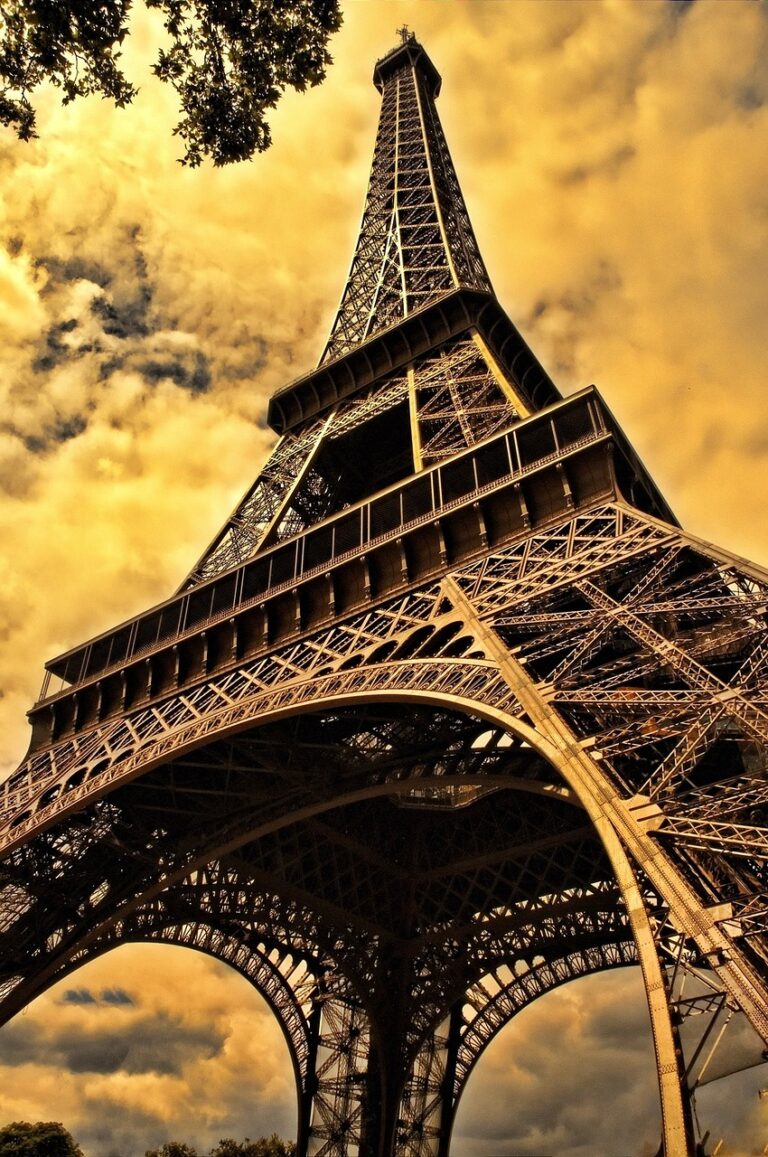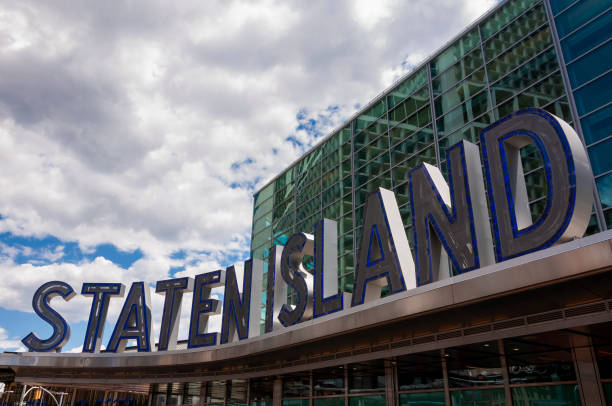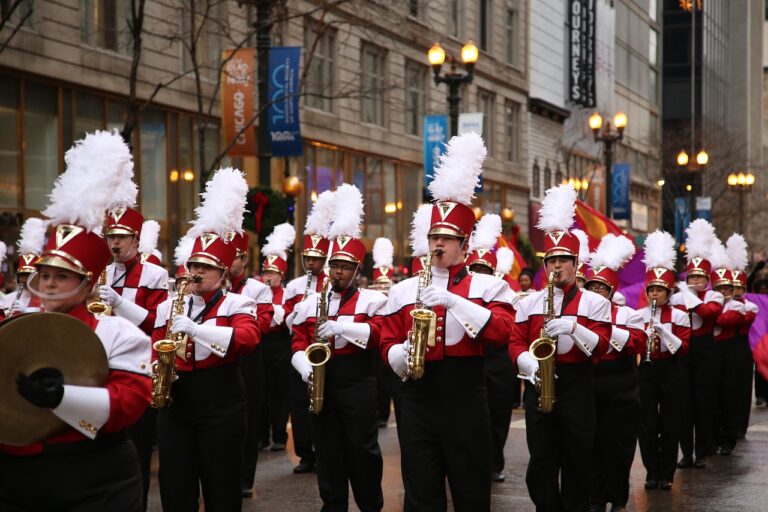Historical landmarks to explore in Lower Manhattan: 4 Historical Landmarks to DiscoverManhattan
Lower Manhattan is a treasure trove of history, boasting a rich tapestry of iconic landmarks that tell the story of New York City’s past. From the towering Statue of Liberty to the hallowed grounds of the 9/11 Memorial, this vibrant neighborhood is a must-visit for history buffs and curious travelers alike.
In this article, I’ll take you on a journey through four historical landmarks in Lower Manhattan that are sure to leave you awe-inspired and with a deeper appreciation for the city’s heritage. So grab your walking shoes and let’s explore the fascinating history that awaits us in Lower Manhattan.
Our first stop on this historical adventure is the Statue of Liberty, a symbol of freedom and hope that has welcomed countless immigrants to the shores of America.
Standing tall on Liberty Island, this colossal statue is not only an architectural marvel but also a testament to the values that this nation was built upon. We’ll delve into the history behind Lady Liberty’s creation, her significance to the city, and the breathtaking views that await those who venture to her crown.
Next, we’ll make our way to the 9/11 Memorial, a solemn tribute to the lives lost during the tragic events of September 11, 2001. This poignant memorial stands on the site where the Twin Towers once stood, serving as a reminder of the resilience and unity of the American people in the face of adversity. We’ll explore the memorial’s design, the stories behind the reflecting pools, and the profound impact this site has on visitors from around the world.
Statue of Liberty: Symbol of Freedom and Hope
The Statue of Liberty stands tall in the heart of Lower Manhattan, serving as a symbol of freedom and hope for millions of visitors each year. As an iconic landmark, it holds significant historical background and embodies the values that the United States was built upon.
Designed by French sculptor Frédéric Auguste Bartholdi, the Statue of Liberty was gifted to the United States by France in 1886. It was dedicated as a symbol of friendship between the two nations and as a commemoration of the American Revolution. Since then, it has become synonymous with America’s commitment to liberty, enlightenment, and democracy.
Standing at a towering height of 305 feet, the statue’s copper exterior has developed a patina over time, giving it a unique green hue that adds to its allure. The statue’s crown offers breathtaking views of New York City, making it a must-visit for tourists and locals alike.
Upon entering the Statue of Liberty, visitors can explore the museum located within the pedestal. Here, you can immerse yourself in the history and significance of this magnificent monument. Learn about the construction process and the dedication ceremony that marked the official unveiling of the statue.
To truly appreciate the significance of the Statue of Liberty, taking a ferry to Liberty Island is a must. As you approach, you’ll feel a sense of awe and inspiration, knowing that you are about to visit a cherished American icon. The close-up view of the statue allows you to marvel at its intricate design and grandeur.
Whether you’re interested in history, art, or simply want to capture an iconic New York City moment, a visit to the Statue of Liberty is an experience you won’t want to miss. It serves as a reminder of the ideals that America holds dear and continues to inspire visitors from around the globe.
Lady Liberty’s Creation and Significance to the City
As I continue to explore the historical landmarks of Lower Manhattan, one iconic symbol that stands out is the Statue of Liberty. Designed by French sculptor Frédéric Auguste Bartholdi, this magnificent statue holds great historical and cultural significance to both the city and the United States as a whole.
The creation of the Statue of Liberty was not only a testament to the artistic skills of Bartholdi, but it also served as a symbol of freedom and democracy. Gifted to the United States by the people of France, the statue was dedicated in 1886. Its purpose was to commemorate the alliance between the two nations during the American Revolution.
Standing at a staggering height of 305 feet, this colossal copper statue is truly a sight to behold. Its green hue, which is a result of the natural weathering of its copper exterior, has become an iconic feature of the statue.
But the significance of the Statue of Liberty extends far beyond its physical appearance. It serves as a beacon of hope and a welcoming sight for immigrants arriving in America. For many, the statue represents the promise of a new beginning and the opportunity to pursue a better life.
A visit to the statue is not complete without exploring the museum within its pedestal. Here, visitors can learn about the history and construction of the statue through various exhibits and displays. From the pedestal balcony, one can also enjoy breathtaking views of the city skyline and the surrounding waters.
To truly appreciate the significance of the Statue of Liberty, it’s important to take a ferry to Liberty Island. The experience of approaching the statue by boat, with the backdrop of the Manhattan skyline, is truly awe-inspiring.
As I continue my exploration of Lower Manhattan’s historical landmarks, the Statue of Liberty remains one of the most cherished and influential symbols in American history. Its creation and significance cannot be understated, making it a must-visit destination for anyone interested in experiencing the rich heritage of this vibrant city.
So, what are you waiting for? Plan your visit today and immerse yourself in the history and beauty of Lady Liberty.
Breathtaking Views from the Crown of the Statue
From the moment you step foot in the Statue of Liberty, the experience is nothing short of awe-inspiring. As you make your way up through the pedestal and climb the 354 steps to reach the crown, you can anticipate the breathtaking views that await you.
As I ascended the narrow staircase, the excitement and anticipation grew with each step. Finally, reaching the crown and stepping out onto the observation deck, I was greeted by an unparalleled vista that stretched out before me. The panoramic view of New York Harbor, the glittering skyline of Manhattan, and the vastness of the ocean was simply breathtaking.
From this vantage point, you truly understand the significance of the Statue of Liberty. It’s not just a symbol of freedom, but also a symbol of opportunity and possibility. As I stood there, taking in the incredible views, I couldn’t help but reflect on the millions of immigrants who passed through these waters, their eyes filled with hope and dreams of a better life.
The height of the crown offers a unique perspective, allowing you to see the city from a different angle. The buildings appear smaller and the grid of the streets becomes more apparent. It’s a reminder of the vastness and grandeur of New York City, and the role that the Statue of Liberty plays in welcoming newcomers to this great land.
Standing in the crown, you can feel the weight of history and the significance of this iconic landmark. It’s a humbling experience that reminds us of the ideals that the United States was founded upon – freedom, democracy, and the pursuit of happiness.
As you stand in the crown of the Statue of Liberty, taking in the panoramic views, you can’t help but feel a sense of awe and appreciation for the beauty and diversity of this great nation. It’s a moment that stays with you long after you’ve descended the staircase and left the statue behind.
9/11 Memorial: A Solemn Tribute to Lives Lost
Visiting the 9/11 Memorial in Lower Manhattan is a powerful and emotional experience. This solemn tribute is a reminder of the tragic events that took place on September 11, 2001. As I walked through the memorial, I couldn’t help but feel a deep sense of respect and sadness for the lives that were lost on that fateful day.
The memorial consists of two reflecting pools, each one situated in the footprints of the Twin Towers. These pools, with water cascading down the sides, create a peaceful and serene atmosphere. The sound of the flowing water provides a calming effect, but also serves as a reminder of the immense destruction that occurred.
Surrounding the pools are bronze panels inscribed with the names of the nearly 3,000 individuals who lost their lives in the World Trade Center attacks, as well as the bombings at the Pentagon and Flight 93 crash in Pennsylvania. Reading these names and seeing the sheer number of lives lost is a stark reminder of the tragedy and the impact it had on our nation.
One of the most poignant features of the memorial is the Survivor Tree, a Callery pear tree that was found in the rubble of the World Trade Center. Despite being severely damaged, the tree survived and was nursed back to health. It now stands tall as a symbol of resilience and hope, reminding us that even in the face of unimaginable tragedy, there is still strength and the possibility for healing.
Visiting the 9/11 Memorial is not just about paying respects to those who lost their lives, but it’s also a chance to reflect on the resilience and unity that emerged in the aftermath of the attacks. It serves as a poignant reminder of the importance of coming together as a nation during times of adversity.
The 9/11 Memorial is a place where visitors can honor the memories of those who were lost, offer condolences to their families, and find solace in a shared experience of remembrance. It’s a somber reminder of the fragility of life, but also a testament to the strength and resilience of the human spirit.
The next section of the article will focus on another historical landmark in Lower Manhattan: Wall Street. Stay tuned for an exploration of the financial heart of the United States.
Design and Significance of the Reflecting Pools
As I continue exploring the historical landmarks of Lower Manhattan, one of the sites that captivated me is the 9/11 Memorial. An emotional and powerful tribute to the lives lost on September 11, 2001, the memorial provides a solemn reminder of the resilience and unity that emerged in the aftermath of the attacks.
The central features of the memorial are the two reflecting pools, which are situated in the footprints of the former Twin Towers. These pools, each nearly an acre in size, are constructed with a dark granite material that allows the water to cascade over the edges, creating a sense of tranquility and contemplation.
Surrounding the pools are bronze panels inscribed with the names of the nearly 3,000 victims, providing a tangible connection to the individuals who tragically lost their lives that day. The names are arranged in a thoughtful and deliberate manner, honoring the relationships between victims and allowing visitors to reflect on the interconnectedness of humanity.
But it is not just the physical design that makes these reflecting pools so significant. They serve as a symbol of remembrance, reminding us of the importance of honoring and preserving the memories of those who were lost. The serene atmosphere created by the flowing water and the names etched into the panels invites visitors to take a moment of quiet reflection and pay their respects.
As I walked around the pools, I couldn’t help but be moved by the Survivor Tree. This Callery pear tree, discovered in the rubble of the World Trade Center, stands tall and strong, symbolizing the resilience and hope that emerged from the tragic events. The Survivor Tree serves as a testament to the human spirit and the ability to overcome adversity.
Visiting the 9/11 Memorial is a profound experience that brings me face to face with the impact of one of the darkest days in American history. It reminds me of the importance of coming together as a nation during times of adversity and the strength that can be found in unity.
By creating a space for reflection and remembrance, the design and significance of the reflecting pools at the 9/11 Memorial ensure that the legacy of those who were lost will never be forgotten.
Impact of the 9/11 Memorial on Visitors
Visiting the 9/11 Memorial in Lower Manhattan is a powerful and emotional experience that leaves a lasting impact on all who come to pay their respects. The memorial serves as a solemn tribute to the lives lost on September 11, 2001, and stands as a symbol of resilience and unity.
Designed to evoke a sense of reflection and remembrance, the memorial consists of two large reflecting pools situated in the footprints of the Twin Towers. These pools, measuring nearly an acre in size, are surrounded by bronze panels inscribed with the names of the victims, ensuring that each person is remembered and honored.
As I stood by the edge of the reflecting pool, I couldn’t help but feel overwhelmed by the magnitude of the tragedy that occurred at this very site. The serene and peaceful atmosphere was in stark contrast to the chaos and destruction of that fateful day, serving as a stark reminder of the immense loss and the impact it had on the nation and the world.
In the midst of the pools, a Callery pear tree known as the Survivor Tree stands tall, symbolizing resilience and hope. This tree, which was discovered in the rubble of the World Trade Center, serves as a living testament to the strength and determination of the human spirit. Its branches reach towards the sky, a reminder that even in the face of tragedy, there is always hope for a better tomorrow.
Walking through the memorial, I couldn’t help but be moved by the stories and memories shared by others who had also come to pay their respects. The shared experience of loss and grief created a sense of unity among the visitors, each one connected by a common thread of remembrance.
The 9/11 Memorial is more than just a tribute to the lives lost; it is a space for reflection, contemplation, and healing. Visitors are encouraged to take their time, to sit by the pools, to read the names, and to remember. It is a place where emotions are raw and where the impact of the events of 9/11 can truly be felt.
As I left the memorial, I carried with me a renewed sense of gratitude for the resilience and strength of the human spirit. The 9/11 Memorial serves as a reminder of the importance of coming together as a nation during times of adversity and the significance of honoring and preserving the memories of those who were lost.
Conclusion
Exploring Lower Manhattan is a journey through history and remembrance. The Statue of Liberty stands tall as a symbol of freedom and opportunity, reminding us of the millions of immigrants who sought a better life in America. Climbing the steps to the crown offers breathtaking views of the city, a humbling experience that connects us to the ideals upon which this nation was built.
The 9/11 Memorial serves as a powerful tribute to the lives lost on that tragic day. The reflecting pools and the Survivor Tree stand as symbols of resilience and hope, inviting visitors to reflect on the strength and unity that emerged from adversity.
Visiting these historical landmarks in Lower Manhattan is not just about sightseeing, but about honoring and preserving the memories of those who came before us. It is an opportunity to connect with the past, to understand the significance of these landmarks, and to appreciate the values they represent.
As I conclude this article, I encourage you to embark on your own journey through Lower Manhattan. Discover the stories, the history, and the emotions that these landmarks hold. Let them inspire you, move you, and leave a lasting impact on your soul.





